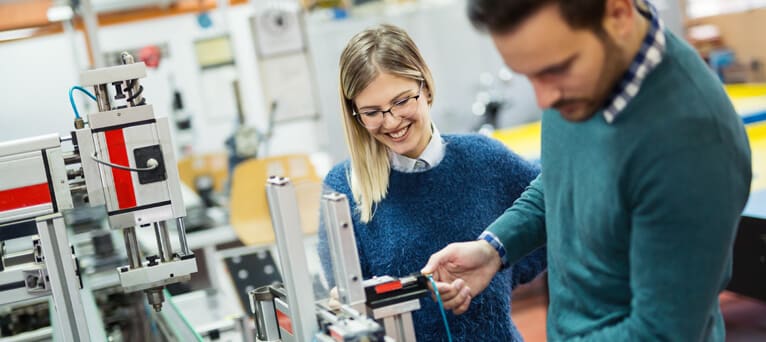Background: Wings are designed for very specific in-flight (loaded) target shapes that differ significantly from the neutral (unloaded) ones. The wing tip of the Airbus 320 deflects upwards by about 1.5m under in-flight conditions and can go up to about 4m before failure. Such a deformation is due to the aerodynamic forces acting on the wing structure generated by the wing itself moving through the air. The optimal aero-structural design is the one that achieves the in-flight (cruise) geometry that maximises the lift to drag ratio. However, the in-flight geometry is a consequence of the structural response to aerodynamic loads, and the aerodynamic loads are a consequence of the wing in-flight geometry. Hence, getting accurate prediction of the in-flight shape at the design phase is of paramount importance for achieving an optimal aerodynamic wing design.
Concept: This PhD project, co-funded and in collaboration with Airbus, aims to develop a framework that improves the prediction of the in-flight shape by including structural uncertainties identified during the Ground Vibration tests in the Finite Element Models used for predicting the deformed shape. Specifically, we will focus on improving the prediction of the so-called in-flight stiffness. The project is both of experimental and numerical nature and the wind tunnel facilities of the University of Liverpool will be used.
Outline of Work: Following an initial literature survey to understand the current state-of-the-art, a programme plan with refined aims and objectives will be developed in agreement with the industrial partner. Focus is on conceptualising the methodology for including probabilistic uncertainty quantification in the prediction of the wing in-flight shape. The next stage will involve developing and investigating a small-scale model to be tested in the low-speed wind tunnel at the University of Liverpool, and, once satisfactory in terms of prediction capabilities, the methodology will be applied to an industrial test case during a 6-month internship at Airbus.
Applicant Eligibility
Candidates will have, or be due to obtain, a Master’s Degree or equivalent from a reputable University in an appropriate field of Engineering. Exceptional candidates with a First Class Bachelor’s Degree in an appropriate field will also be considered.
Application Process
Candidates wishing to apply should complete the University of Liverpool application form applying for a PhD in Aerospace Engineering and uploading: Degree Certificates & Transcripts, an up to date CV, a covering letter/personal statement and two academic references.
Enquiries
Candidates wishing to discuss the research project should contact the primary supervisor, those wishing to discuss the application process should discuss this with the School Postgraduate Office [[Email Address Removed]].

 Continue with Facebook
Continue with Facebook




